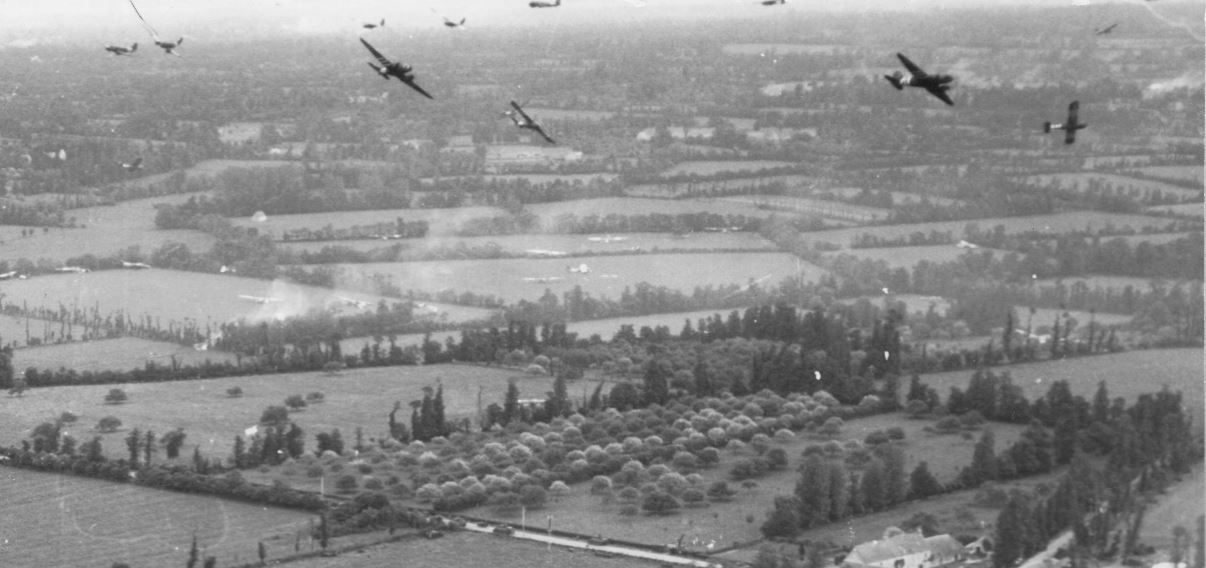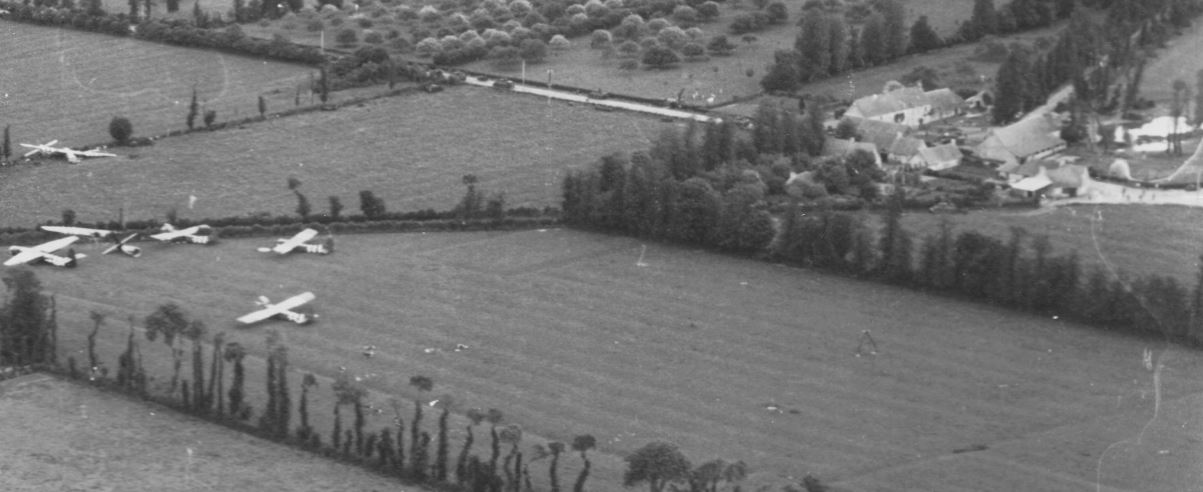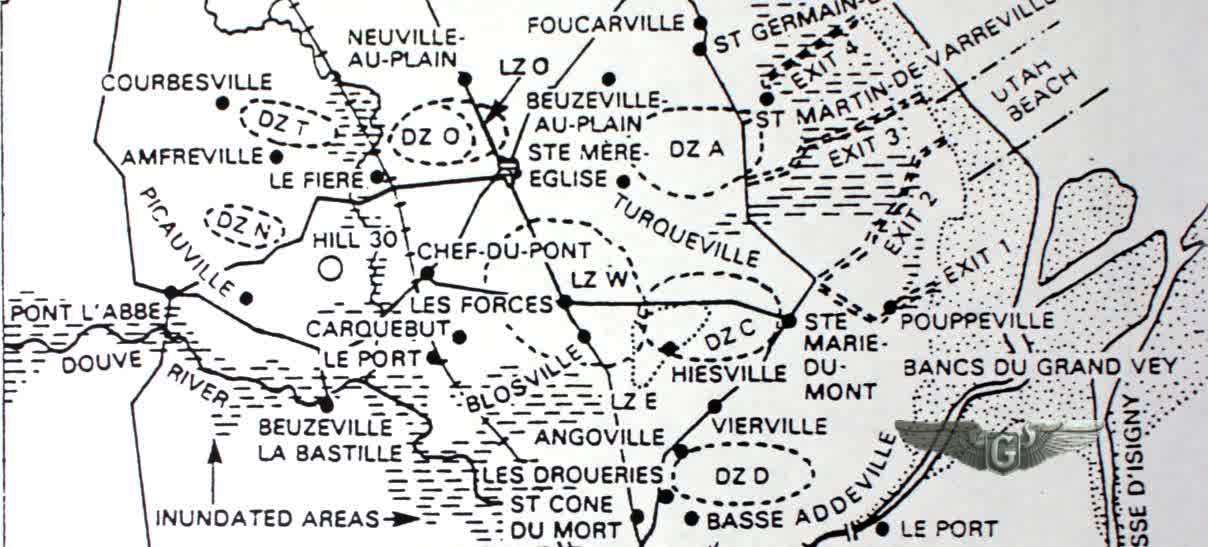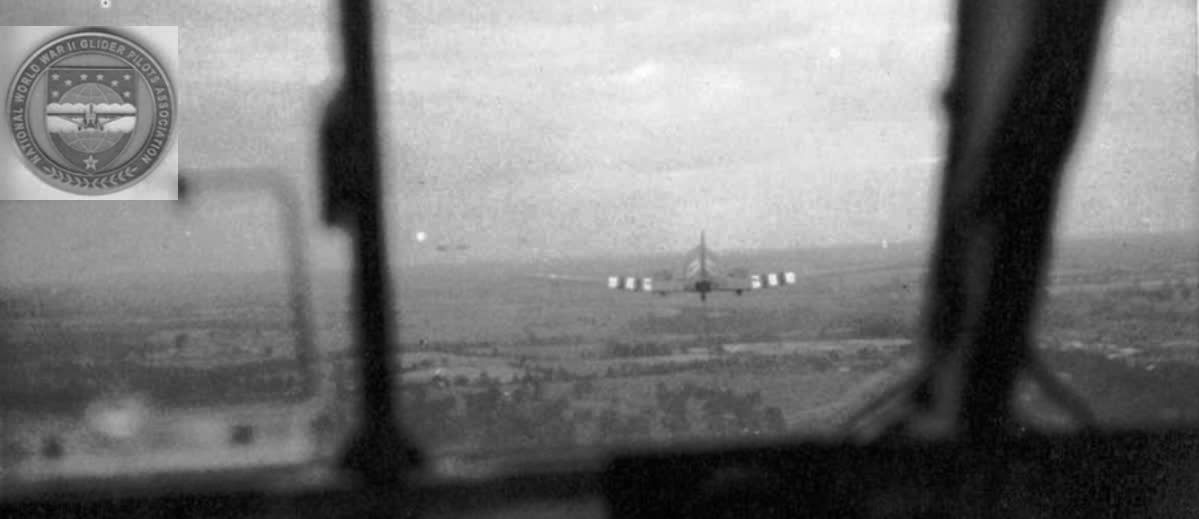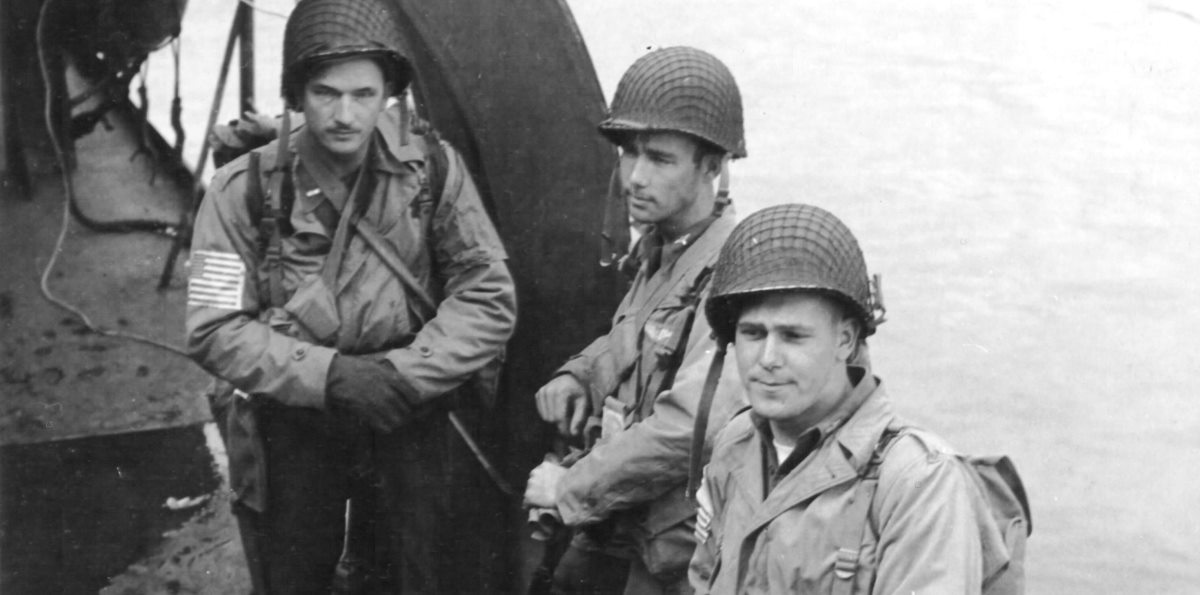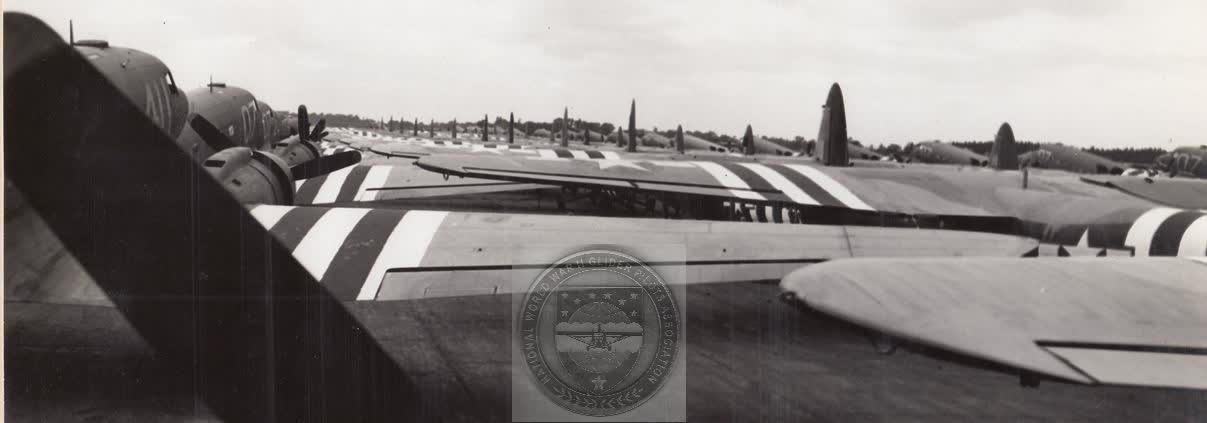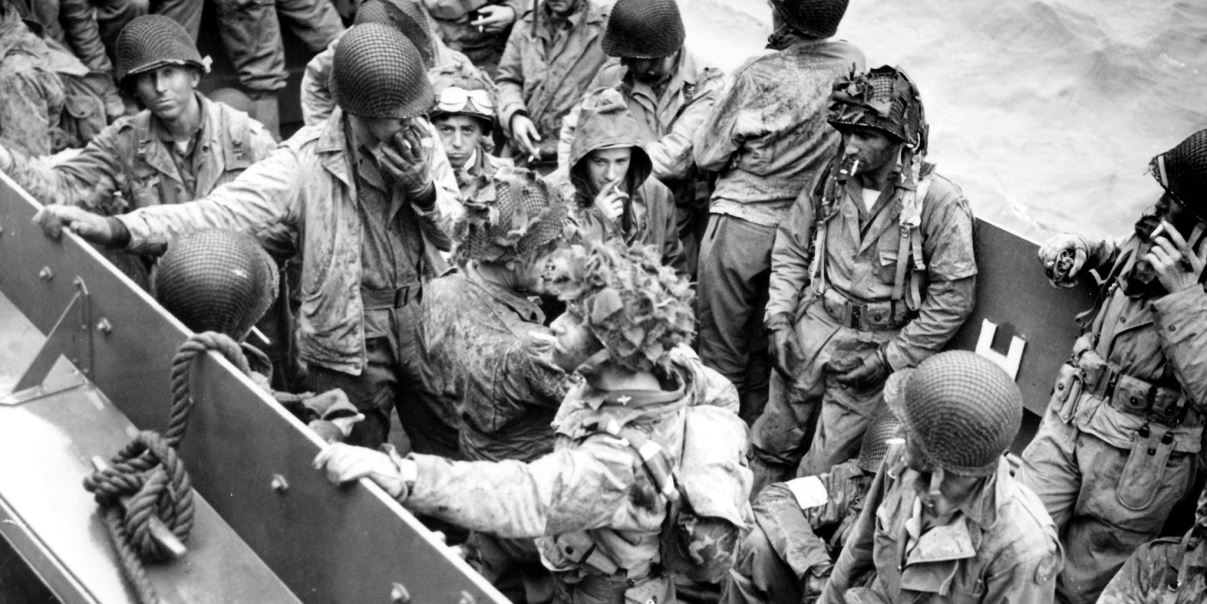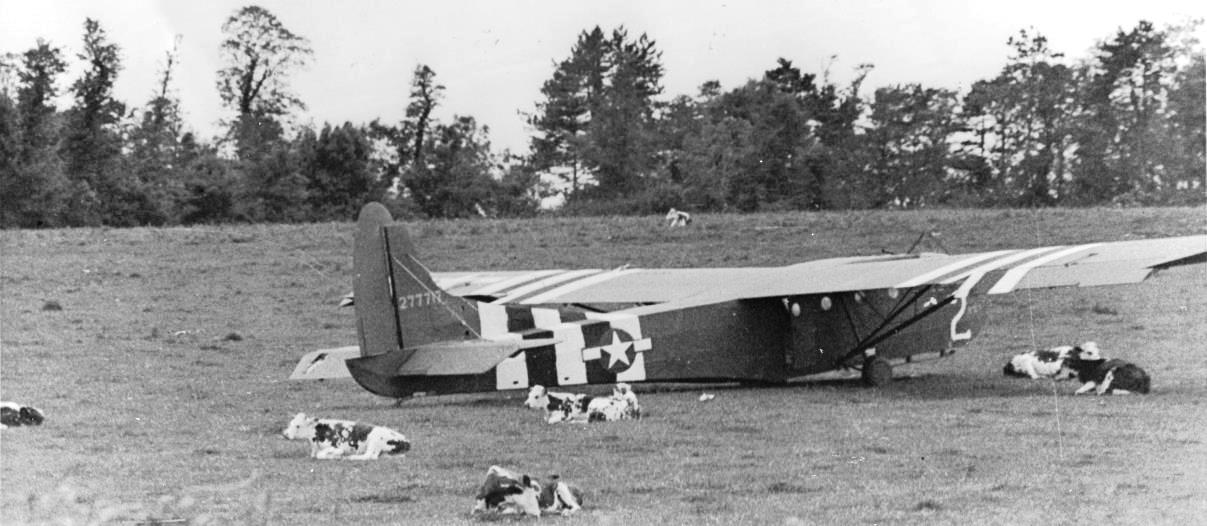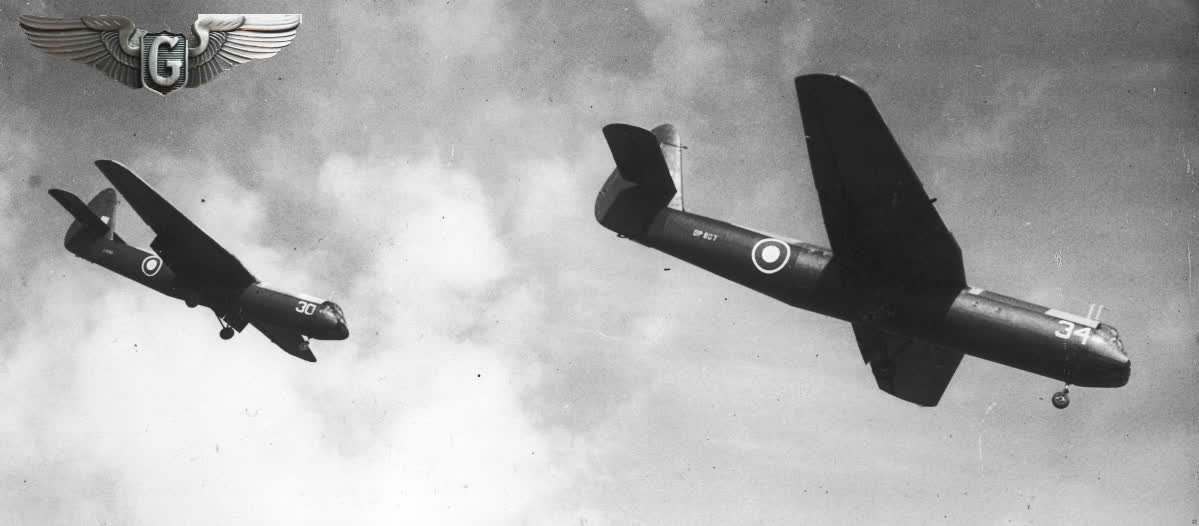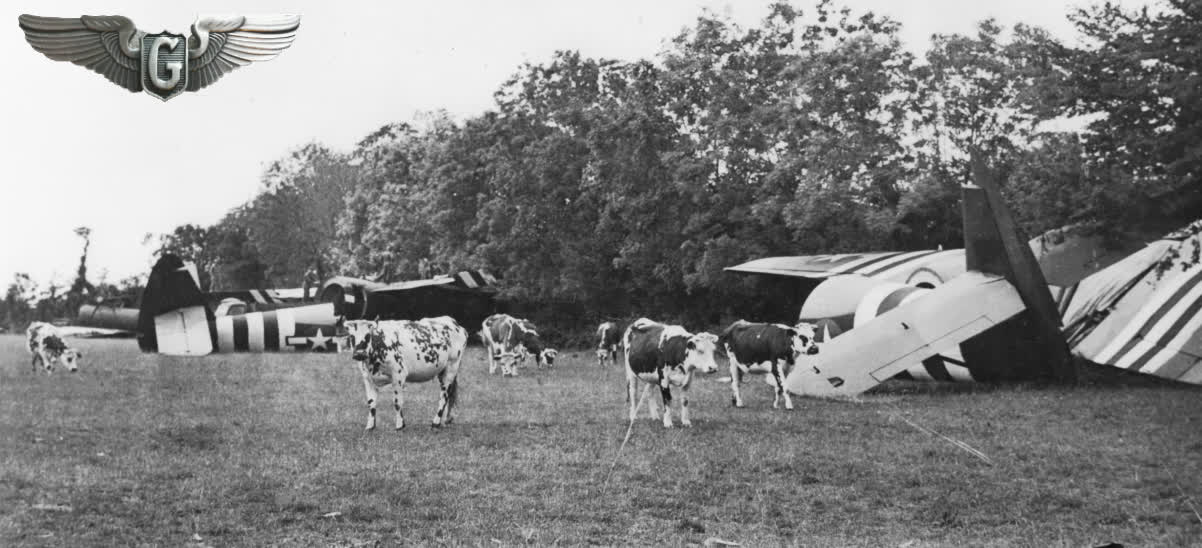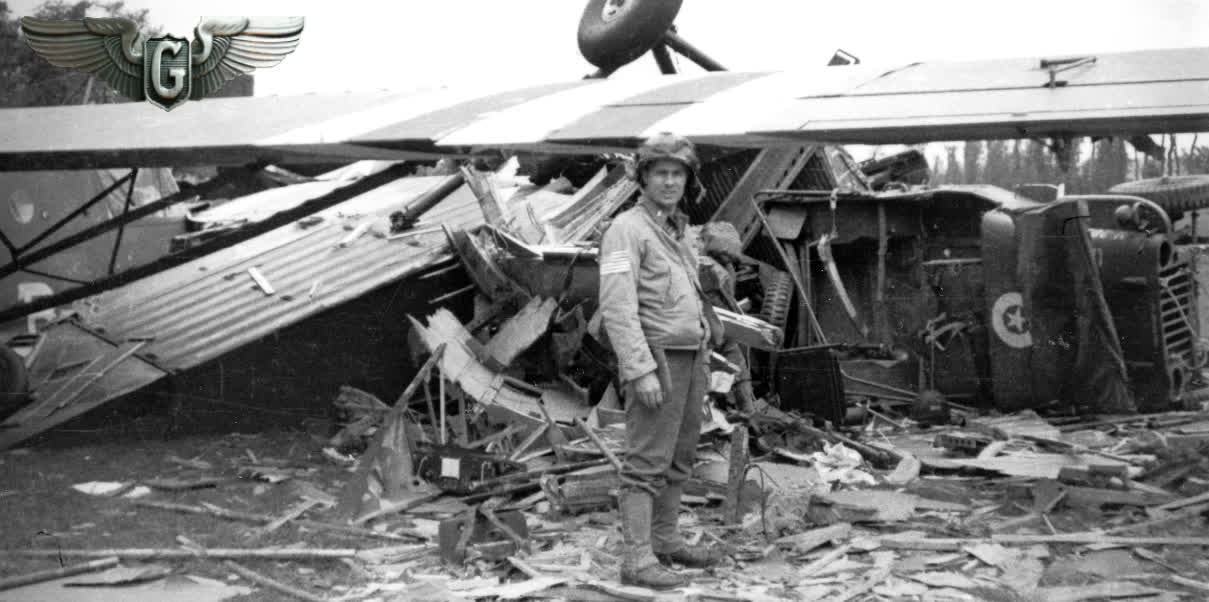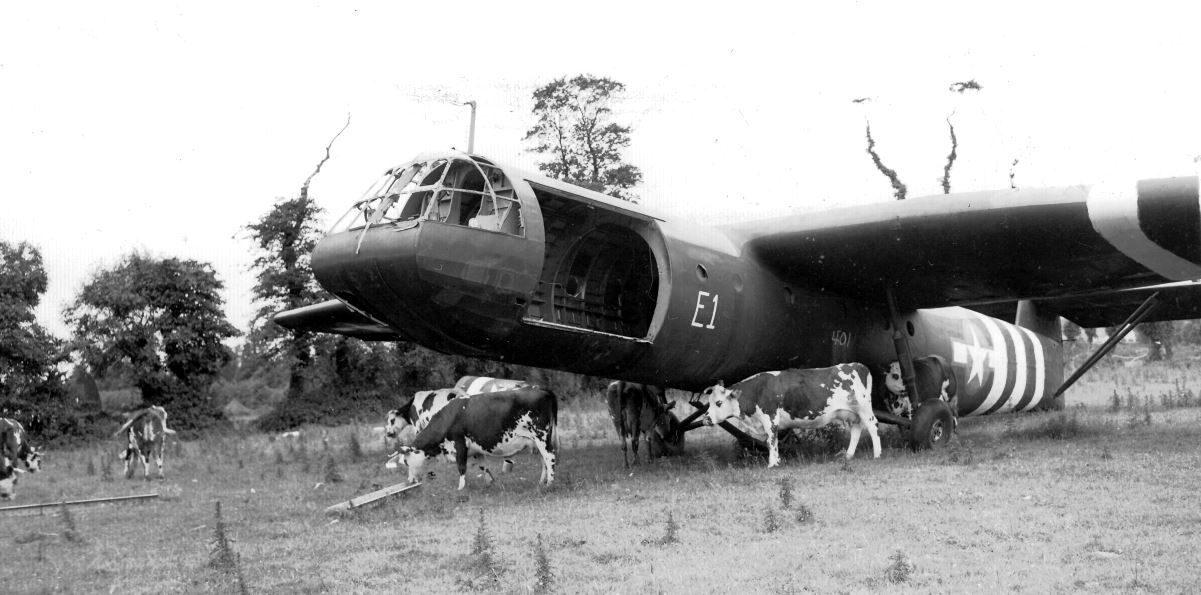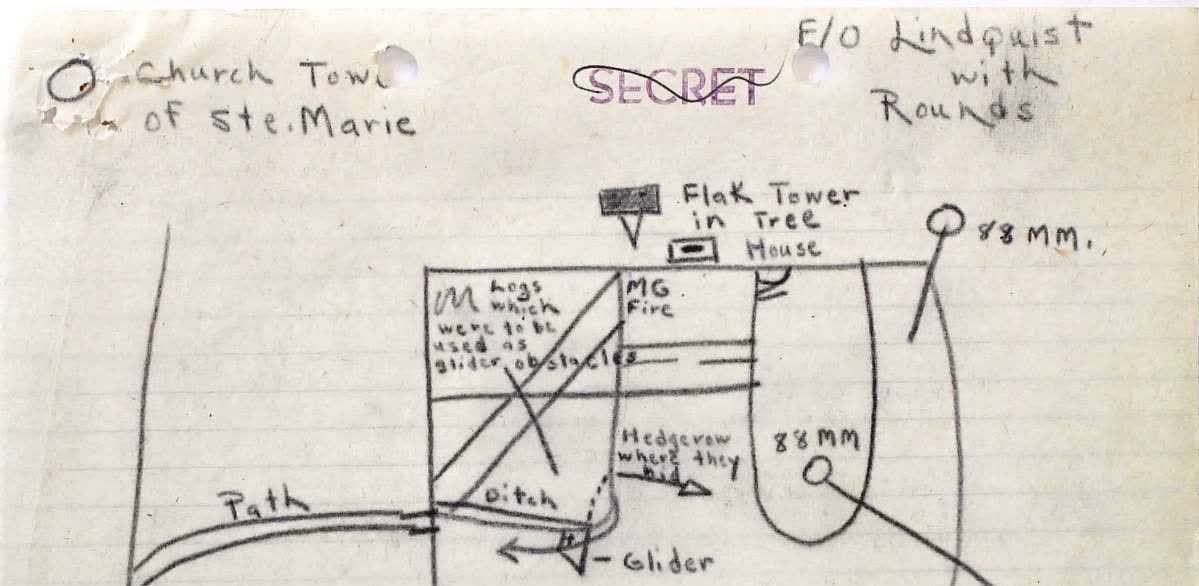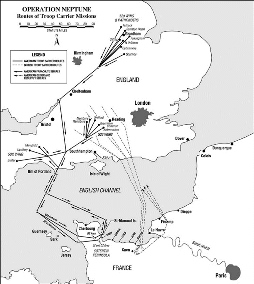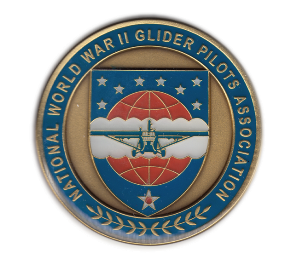National WWII Glider Pilots AssociationLegacy Organization of veterans National WWII Glider Pilots Association. Discover our History, Preserve our Legacy | ||
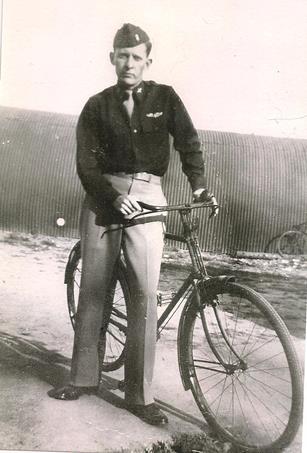
Courtesy Jack Merrick with bicycle at Ramsbury England.
2nd Lt Jack Merrick graduated from Advanced Glider Pilot Training, 18 May 1943, at Lubbock TX. He was sent to the ETO and assigned to the 84th Troop Carrier Squadron, 437th Troop Carrier Group stationed at Ramsbury England. Jack piloted a glider for three combat operations; Normandy (Operation OVERLORD), Southern France (Operation DRAGOON), and Holland (Operation MARKET).
As Colonel Cedric Hudgens pushed up the throttles on his C-47 at 0l59 British double summer time June 6th, l944, the invasion of Nazi-occupied France commenced for the 437th Troop Carrier Group. Fifty-two C-47s towing fifty-two CG4A gliders ,each carrying units of the 82nd airborne division took off from Ramsbury, about 65 miles west of London. Our destination was Ste. Mere Eglise. At about the same time, the 434th Troop Carrier Group took off from their base in England, with units of the l0lst airborne division. Their destination was Montebourg, east of Ste. Mere Eglise.
My position in the formation was # 5l, and the last glider was flown by Jim Larkin.
His glider carried an anti-tank gun to be attached to the Jeep in my glider. Two airborne troops, a sergeant and private, rode with the Jeep. Thirteen echelons of four C-47's, each towing a C-G4A glider, took off a few seconds apart and circled over Ramsbury until the formation assembled. We then headed south toward the first checkpoint, Portland Bill.
On June 1st, airborne troops of the 82nd had moved to our field and the atmosphere changed drastically. Barbed wire fences were erected; we marched to and from the mess hall under armed guard. We were not allowed to talk to anyone not taking part in the mission. Security was very tight and we knew the time had come to take part in the invasion of France. The invasion code name was OVERLORD and history would show this to be the largest invasion force ever assembled.
We assembled in the briefing room and a large map of Normandy was in place in great detail. A somewhat tense 82nd Airborne Lt.Colonel was introduced after the flight briefing. The Colonel pointed his long stick at Ste Mere Eglise on the map and began to talk. He said that the enemy would be everywhere around our landing zone and in great strength. He pointed out that some of the German troops were battle-hardened, although some would be older men and very young soldiers. He cautioned about carrying any kind of non-issue weapon or other equipment as this could lead to execution .The gravity of the battle to come made it difficult to even think of anything else.
The evening of June 5th, we gathered on the ramp for a service by our group chaplain, Captain Jesse Wood . He read from the 9lst Psalm about the happy state of the godly, and that David, the singer comforted men in their hour of trouble. As the breeze picked up, the pages fluttered; Captain Wood read on: - "I will say of the Lord, he is my refuge and my fortress; my God, in him will I trust. Surely he shall deliver thee from the snare of the fowler and from the noisy pestilence.-A thousand shall fall at thy side, and ten thousand at thy right hand; but it shall not come nigh thee". Not being a student of theology nor overly religious at age twenty-three, I thought more of the flight into enemy territory, however tried to listen as he continued "For he shall give his angels charge over thee, to keep thee in all thy ways.- They shall bear thee up in their hands, lest thou dash thy foot against a stone. Thou shalt tread upon the lion and adder, the lion and dragon shalt thou trample under feet. He shall call upon me, and I will answer him: I will be with him in trouble, I will deliver him , and honor him.- With long life I will satisfy him, and shew him my salvation." After the reading I heard no sound but the wind sweeping over the hill. We gathered into small groups and chatted. I felt strongly that I would come through the mission but knew down deep that some of us would not return.
Flying behind the tow plane at night was tedious. As we reached Portland Bill, England, my family back home came to mind, and I thought of Mary, the girl I loved (and eventually married). She was at college in Texas. Within a few hours we would be on enemy soil and the airborne troops would engage the enemy in savage battle.
After passing Portland Bill the formation took a southwesterly heading toward a light ship west of the Cherbourg peninsula. In a few minutes, we saw the blinking code. The formation turned east toward Ste. Mere Eglise inland from Utah Beach. Flying between the islands of Guernsey and Jersey we ran into anti-aircraft fire. The tracers appeared to float upward, seemingly slow at first, but apparently gaining great speed when closer. A few seconds later we disappeared into a fog bank and I lost sight of the tow plane. All we had to go by was a few feet of tow rope in front. With needle, ball, and an airspeed indicator, we normally could fly instruments in free flight, but not on tow, as there was no way to know the exact position of the tow plane. We used the angle of the tow rope and hoped for the best . I turned the wheel over to my co-pilot John Boersig, to see if he could do better, but he gave it back to me. There is no method for instrument flying in fog, on tow. After a few seconds, (though it seemed an eternity) we broke into the clear. I saw none of the other planes and gliders. In a very few minutes, we got the cut-off signal from the tow plane. Looking down to the right I saw our field, but it was already filled with gliders. I cut loose from the tow plane and told Boersig that I would land in a nearby field. We saw the tree lines but could not judge the height of the trees. This was our undoing. I put the glider into a left slip to slow it as much as possible. My hope was to get on the ground and stopped before running into trees on the far side of the field. The left wing hit a tree. From that point on it was a semi-controlled crash landing. We hit the ground very hard; the Jeep broke loose and shot forward, breaking the fasteners on the nose of the glider. The cockpit swung up and then half way back down hitting the Jeep. I was knocked out for a few seconds; Boersig and an 82nd airborne sergeant got me out of the glider and helped me to my feet. I had terrible pain on my forehead; my M-l Gerand rifle was broken in half and my trench knife was lost out of my boot. The 82nd airborne private injured a hand but not seriously. We got the Jeep free of the glider and started it. We huddled under a half-shelter and by flashlight looked at a map. Soon, the airborne Sargeant figured the direction to travel once out of the field The Jeep ran OK but the left front wheel wobbled because of a bent axle.As we got on our way we saw something waving in a tree. This worried us until we discovered it was a parachute. We made it out of the field and started down a very narrow road. The sergeant asked me to take the point, that is, to walk in front of the Jeep, while he and the 82nd Airborne private rode, Boersig walked behind.
We had travelled only a short distance when we were challenged. I had not fully regained my senses from the crash and could not recall the password. The challenge was FLASH and the sergeant answered THUNDER. We were ordered to advance. Only then did I see the American paratrooper with his Thompson sub-machine-gun pointed at me! He satisfied himself that we were indeed Americans by recognizing the Jeep. The paratrooper asked me to help his lieutenant who had injured his ankle in the landing. I went with him and knocked on the door of the small farmhouse where he was hiding. An elderly French couple came to the door and between them stood the lieutenant with his machine gun on me. He had been drinking wine given to him for pain. We loaded him into the Jeep and cautiously proceeded down the road. Before long, daylight began to break; we saw a large group of Americans who had parachuted or landed in gliders. We found a doctor who had parachuted in, and turned the injured lieutenant over to him.
The airborne people soon set up a regimental command post while the paratroopers engaged Germans in the woods. The Germans used machine pistols which seemed to fire at least three shots to each one from our heavier, Thompson machine-gun. We glider pilots were under orders to not engage in combat unless conditions so required. Our orders were to get back to England and be available to fly another mission if necessary. We stayed in hedge rows and later, guarded German prisoners brought in by the airborne troops. Other glider pilots helped retrieve supplies dropped from C-47s during the day.
Ammunition ran short; the airborne soldiers took ours, except for one clip, plus all our hand grenades. Our situation was serious because the beach forces had been delayed by enemy action. Supplies were short. A sniper shot the end off a colonel's nose as he stood in the command post. Although we were in no immediate danger, our position was tenuous, at best.
Finally, on the afternoon of June 8th, a big GI truck lumbered up a narrow road toward our command post. We were greatly relieved that the beach forces had made contact with us. In a matter of hours, the German prisoners lined up in a column of twos, with glider pilots on each side. Captain Willis Evans, group glider officer, led the column toward the beaches. We passed through Ste. Mere Eglise. I was so worn out that I unloaded my Gerand that I got from an injured glider pilot and gave it to the German prisoner nearest to me to carry. We saw several dead German soldiers on the road and a few Americans. We walked by a Brittish Horsa glider that had crashed and counted thirty bodies which had been covered with blankets.
At one point a wounded German prisoner near the end of the column fell down thus stopping the column. Captain Evans came back and told the glider pilot nearest the German that the column could not be stopped again. Fortunately, military police came and loaded the wounded German prisoner into a Jeep and drove him away.
We finally reached the beach and placed our guns in a pile as ordered. One German prisoner walked a few feet from the main group and defecated. A French maiden , carrying a pail of milk to some wounded soldiers on the beach, took no notice of this. A unit coming ashore lost nearly everything wading from their boats; they got our weapons. A few news correspondents interviewed glider pilots about the landings. One newsman asked me a few question about the night landings. In due time, we loaded into small boats which carried us to a large LST (landing ship tank) for the night trip back to England. We assisted a Navy doctor as he cared for wounded soldiers in the hold. Also aboard were a few wounded German prisoners. Boats and ships of all sizes traversed the area. We heard at least one alert sounded for a German E-boat. Our LST was not hit and we were back in England within a few hours. Our first combat mission, code named GLIDER SERIAL DETROIT of operation OVERLORD was finished.
It was later, back in England that I learned the fate of James Larkin, flying glider # 52. His tow plane had been severely damaged by anti-aircraft fire and crashed, killing all crew members. Larkin cut loose, when he saw the plight of the C-47, and made a successful crash landing. The gun crew removed the firing pin from the anti-tank gun and buried it. James Larkin and his co-pilot hid by day and travelled by night, taking three weeks to reach friendly forces near Utah beach.
11 Serials - 514 gliders
et Patrick Elie
Preparing for the Elmira Mission, Greenham Common.
Neptune Operation air assault route from England.
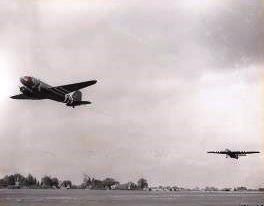
A C-47 and Horsa combination takes off from Greenham Common as part of the Elmira mission. The C-47 pictured here would later crash on a glider mission to Holland.
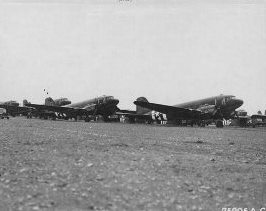
Tow planes and gliders of the 439th Troop Carrier Group are lines up on the runway before the Hackensack mission.
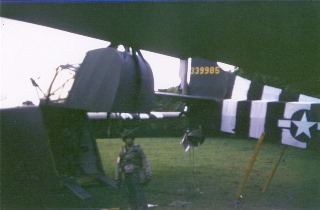
Two gliders of the very first mission in the Normandy fields.

